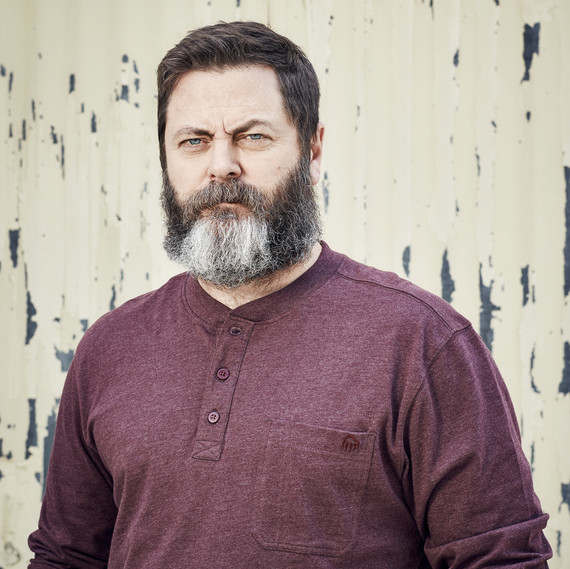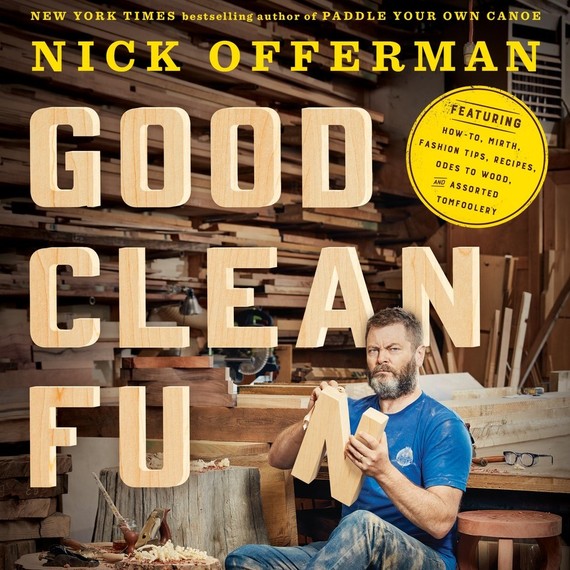

Photography by: Emily Schur
1. Why woodworking, and how did you learn the technique?
I came to it organically, learning general tool use as a kid from my dad and uncles and grandfathers. These fundamentals then became a career in building scenery in Chicago, which then became timber-frame construction in Los Angeles, which became fine furniture. The term “woodworking” encompasses many techniques and tools, and I am still learning them. After my early education from family and theater professionals, I have been self-taught, utilizing periodicals like Fine Woodworking Magazine and Popular Woodworking.
2. What is the idea behind your new book, Good Clean Fun?
I have a penchant for promoting hand-crafting. I want to encourage my readership to refuel their lives with the charismatic power of making things for themselves, be it furniture, boats, leather belts, or lasagna. This book, friendly for all ages, celebrates the value of inhabiting a community of like-minded makers, such as the collective of artists at Offerman Woodshop. I basically draw the reader in with loving language about wood and tools, and then go for the kill with about a dozen how-to projects from me and my collaborators in the shop. I visit with 8 different woodworking masters around the country to create profiles of women and men who have achieved great successes in the field. Further, I’d be remiss if I didn’t mention all the fun bits in the book — a 4-page comic about felling a tree, a section on “shop fashion” by my hilarious wife Megan Mullally, a feature on cookouts complete with recipes, and much more in the mirth department.
3. You include some how-to projects in your book. What would you recommend for someone’s first woodworking project? Are there any small-scale ideas people can try around the house?
I always recommend that one should start with hand tools like a block plane and a chisel. Woodworking is all about shaping the organic fibers of wood with different iterations of sharpened steel. Familiarize yourself with the proper sharpening techniques, which are quite simple, and then learn to make one small board flat and square. This can become a coaster or a cutting board, or you can make more of them to then step up to joinery and make a box. The book has a chapter on coasters that is quite easy to achieve, even in the garage, if you clamp a piece of wood to a table.
[RELATED: 7 Things You Need to Know About Wood Carving]

Photography by: Emily Schur
4. What’s the coolest piece you’ve ever made from wood?
So far, my canoes would have to take the cake. I made one for my friend Jimmy Diresta, a famous maker himself, built on the Redbird design from Bear Mountain Boats. Nothing feels quite so magnificent as paddling a canoe that you made down a serene river, soaking in the sights, smells and sounds of nature as you travel farther from the tentacles of modern technology with every stroke. Seeing the beautiful curves of a canoe take shape on one’s bench feels rather more like wizardry than carpentry.
5. How did you turn your passion into a full-fledged business? And do you have any advice for other woodworkers who have the same entrepreneurial spirit?
When I first set up my shop, I had the good fortune to be in touch with a healthy client base through my work as an actor. People in the business hired me to build cabins in their yards, then when I switched to furniture, they followed, and ordered some of my first slab tables and other commissions. This income was always supplemented by my part time acting income, so I never had the pressure of “starting a small business.” My clients continued to support my shop until “Parks and Recreation” (the NBC comedy I was on) took off and we added the other woodworkers. My book has a lot of advice for folks who want to make woodworking a full-fledged business, because there’s a lot to think about beyond the romance of making wood shavings. You have to work very hard to keep your overhead low, and you have to be a canny business person first and foremost.
6. You’re very creative, between woodworking and acting. What’s your secret to staying inspired and motivated, especially when you’re so busy? Were you working in the shop during “Parks and Recreation”?
Well, this new book is a great example of how I stay inspired — I choose jobs, whether performing, writing or building, that I would do anyway for fun. That way, it rarely feels like work. Writing a book about woodworking and my shop, and building the projects for the book were a blast. Writing comedy songs with my wife and then touring the country and performing live with her is a dream. I do my best to choose film projects that really make me laugh, or move me, or ideally, both.
During “Parks and Rec,” I was pretty spoiled because I usually had a couple days off every week to spend in the shop. This allowed me to make some canoe paddles and to begin my ukuleles, among other fun projects. I also really enjoy just administrating — weighing in on everybody’s projects and continuing to shop’s practicality with our shop manager, Lee.
7. What would be your dream woodworking piece?
That’s a tough one. I have a bunch of ukuleles to finish, and then I will begin to work on acoustic guitars. Making a steel string guitar that sounds halfway decent so I could play it on my humorist tours would be the realization of a great dream.
After that it will likely be more boats, like maybe a couple of kayaks for Megan and myself.
[WANT MORE? Watch a Video on Wood Carving With David Esterly]